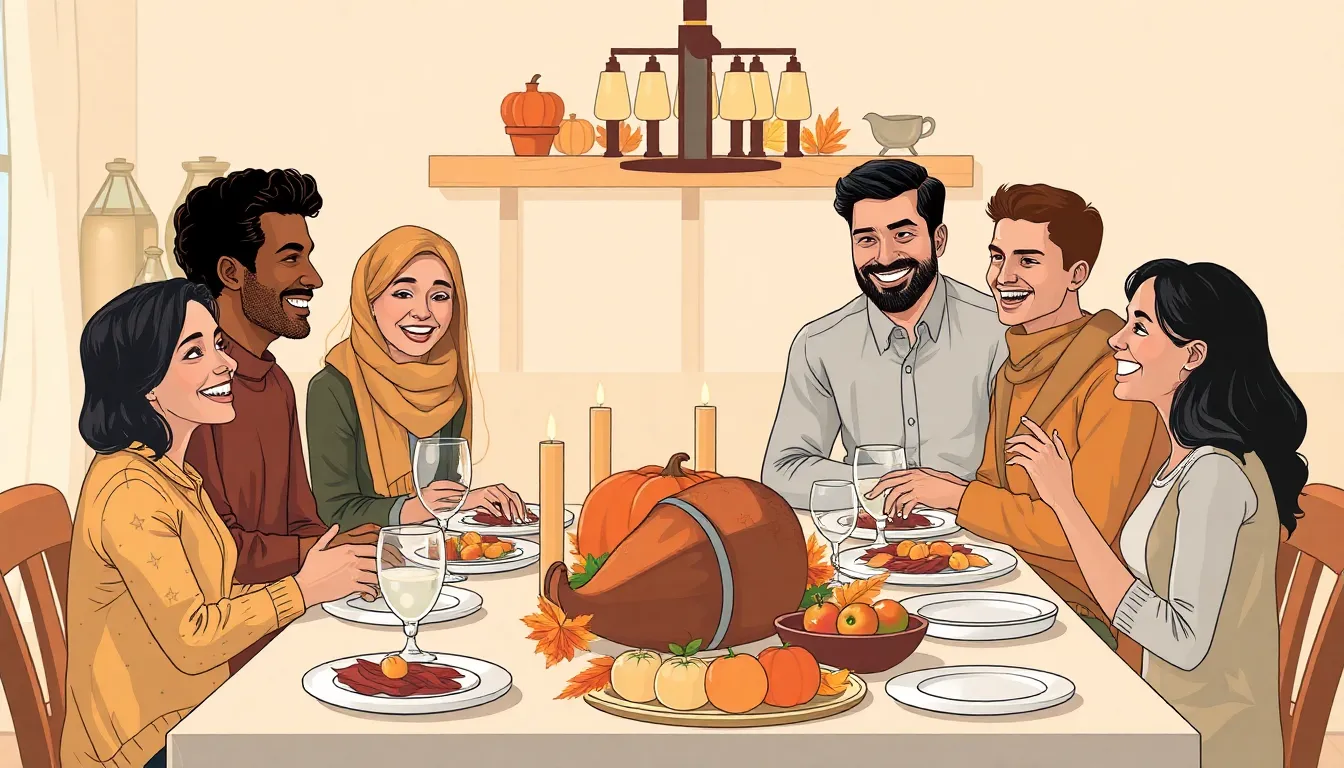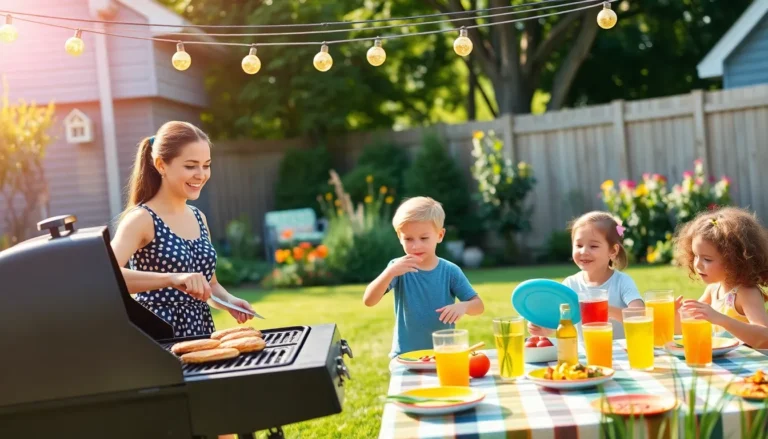In a world where everyone’s juggling work, school, and the occasional Netflix binge, it’s easy to overlook the simple act of gratitude. Yet, family gratitude rituals can transform chaotic households into warm havens of appreciation. Imagine gathering around the dinner table, not just to eat, but to share what makes each family member feel thankful. It’s like Thanksgiving every day, minus the turkey-induced comas!
These rituals don’t just foster connection; they sprinkle a little joy into daily life. They remind everyone that even amidst the chaos, there’s always something to be grateful for—like that one relative who insists on bringing the best dessert. So why not dive into the world of family gratitude rituals? It might just be the secret ingredient your family needs for a happier, more connected life.
Table of Contents
ToggleUnderstanding Family Gratitude Rituals
Family gratitude rituals create moments for reflection within households. They foster connections and enhance emotional well-being.
Definition and Importance
Family gratitude rituals involve intentional practices that express appreciation among family members. These rituals may include verbal sharing of gratitude during meals, writing thank-you notes, or acknowledging acts of kindness. Understanding gratitude’s role in enhancing emotional bonds fosters a warm family environment. Establishing regular rituals promotes a culture of appreciation, benefiting individual well-being and strengthening family ties.
Benefits for Family Dynamics
Engaging in gratitude rituals significantly improves family dynamics. Enhanced communication occurs when families openly express appreciation. Families experience increased emotional support as they acknowledge each other’s contributions. A positive atmosphere develops as members feel valued and understood. Research indicates that families practicing gratitude report higher satisfaction levels and deeper connections. Involvement in these rituals cultivates empathy and cooperation, making interactions more harmonious.
Types of Family Gratitude Rituals

Family gratitude rituals come in various forms, and each type serves a unique purpose in fostering appreciation. Understanding these different practices helps families find what resonates most with them.
Daily Gratitude Practices
Daily gratitude practices encourage consistent expression of appreciation. Every evening, families can gather to share one thing they are grateful for from their day. This simple activity builds a routine that reinforces positive communication. Another method involves maintaining a gratitude jar, where family members contribute notes about what they appreciate throughout the week. Sharing the contents during a weekly gathering creates anticipation and deepens bonding. Engaging in these practices nurtures a habit of recognizing the positive aspects of life, further strengthening family connections.
Seasonal or Holiday Rituals
Seasonal or holiday rituals highlight gratitude during special times of the year. For example, Thanksgiving is an ideal occasion for families to reflect on their blessings while enjoying a festive meal together. Each member can take turns expressing gratitude for experiences, people, or opportunities. Additionally, New Year’s celebrations provide a chance to acknowledge achievements from the past year and set intentions for the upcoming one. Families can also create unique traditions, such as a gratitude tree adorned with notes, symbolizing appreciation during the holiday season. These rituals enrich family culture and create lasting memories centered on gratitude.
Implementing Family Gratitude Rituals
Implementing family gratitude rituals is straightforward and rewarding. Families can create a meaningful routine focusing on appreciation.
Tips for Starting a Ritual
Starting a gratitude ritual requires dedication and consistency. Choose a specific time, such as during meals or before bed, to share appreciation. Use prompts to help family members articulate their gratitude, making it easier to engage everyone. Begin with simple practices that fit your family’s lifestyle, ensuring participation feels natural. Gradually incorporate new elements to keep the ritual fresh.
Creative Ideas to Engage the Family
Engaging the family in gratitude rituals can take many forms. Create a gratitude jar where everyone adds notes throughout the week to read together on Sundays. Plan themed gratitude nights, focusing on specific topics like family traditions or shared experiences. Organize gratitude scavenger hunts, encouraging family members to find items that symbolize appreciation. Use art supplies to decorate thank-you cards and send them to friends or relatives. Rotate family members’ roles as gratitude facilitators, giving everyone the chance to lead the discussion and share their perspectives.
Challenges and Solutions
Family gratitude rituals can encounter challenges that hinder their effectiveness. Recognizing common obstacles helps families prepare for and address these issues proactively.
Common Obstacles Families Face
Time constraints often prevent families from engaging in gratitude rituals consistently. Busy schedules can lead to missed opportunities for sharing appreciation. Additionally, varying participation levels among family members may create imbalance in engagement. Different ages and personalities may result in some members feeling excluded or uninterested. Moreover, external stressors, such as work or school pressures, can divert attention away from fostering an appreciative environment.
Strategies to Overcome Challenges
Establishing a designated time for gratitude practices can help ease time constraints. Families could schedule ritual times when everyone is available, minimizing disruptions. Encouraging open communication fosters inclusion among all members. Families might consider rotating facilitation roles to ensure each person’s voice is heard. Incorporating fun elements, such as games or creative activities, can enhance participation and enthusiasm. Reminding family members of the positive impacts of gratitude promotes a consistent and supportive atmosphere.
Family gratitude rituals play a vital role in nurturing a positive and connected home environment. By intentionally expressing appreciation, families can deepen their relationships and create lasting memories. These practices not only enhance emotional well-being but also foster a sense of belonging among family members.
Implementing gratitude rituals can be a simple yet powerful way to transform daily interactions. Whether it’s sharing gratitude at dinner or engaging in themed nights, the key lies in consistency and creativity. Overcoming challenges is part of the journey, but with dedication, families can cultivate a culture of gratitude that enriches their lives.
Incorporating these rituals into family life isn’t just about saying thank you; it’s about building a foundation of love and support that lasts a lifetime.



